Key takeaways:
- Agile methodology promotes flexibility, collaboration, and communication, allowing teams to adapt quickly and improve continuously.
- Key roles like Scrum Master and Product Owner are essential for facilitating teamwork and ensuring alignment with customer needs.
- Building trust within teams through transparency, active listening, and shared experiences fosters a safe environment for collaboration and innovation.
- Implementing effective communication strategies, such as daily stand-up meetings and visual tools, enhances team engagement and accountability.

Understanding Agile Methodology
Agile methodology is all about flexibility and responsiveness. I remember when my team first adopted Agile; we had weekly stand-up meetings where we discussed our progress and challenges. It was eye-opening to see how quickly we adapted to changes, turning obstacles into opportunities for growth.
At its core, Agile emphasizes collaboration and communication. There were moments when a team member shared a concern and, rather than brushing it off, we explored it together. I’ve often wondered: how many projects could thrive if teams prioritized open dialogue like this? It’s incredible how fostering a safe environment allows ideas to flourish.
In addition, Agile breaks projects into bite-sized iterations, which can feel less daunting. I found that after a sprint, we celebrated not just our successes but also the lessons we learned from failures. This aspect of Agile creates a culture of continuous improvement—something I deeply value in my approach to software development.
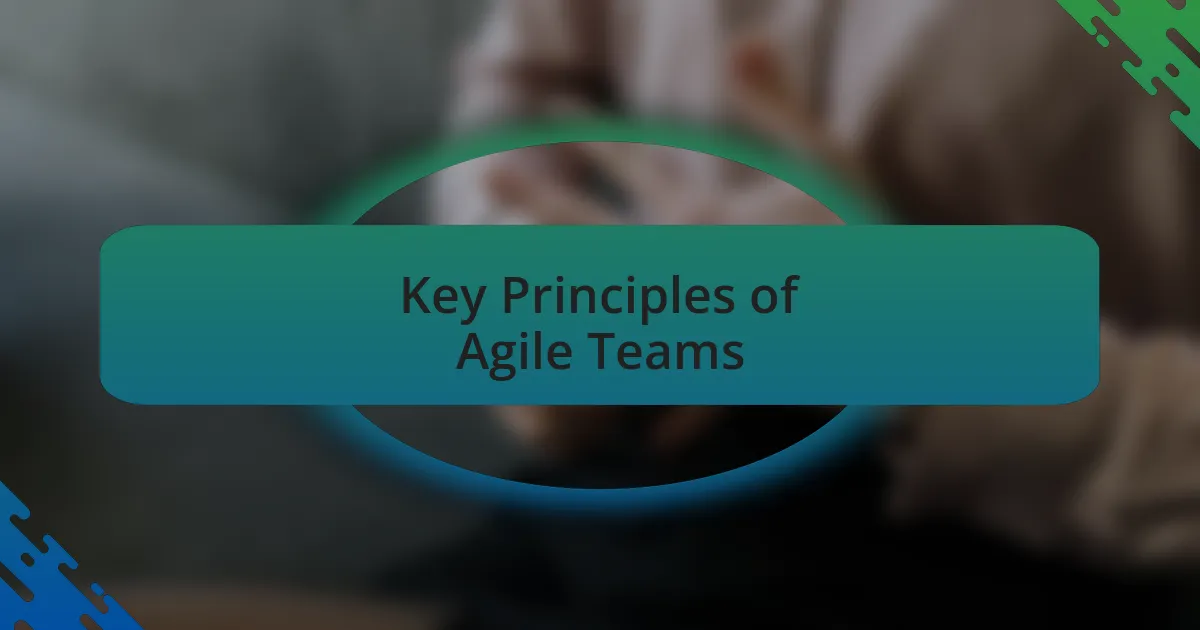
Key Principles of Agile Teams
One key principle of Agile teams is the commitment to self-organization. I recall a project where we were given the freedom to choose our roles based on our strengths. This empowerment transformed our dynamics; team members felt more engaged and motivated to contribute. Have you ever noticed how much more productive a team becomes when they can leverage individual talents without micromanagement?
Another vital aspect is a focus on delivering value. In one sprint, we prioritized features that brought immediate benefit to end-users. Seeing the positive reaction from stakeholders reinforced my belief that aligning work with customer needs is essential. It leaves you wondering: what if we always centered our efforts around user feedback?
Lastly, the principle of reflection fosters ongoing improvement. At the end of each sprint, we held retrospective meetings to discuss what went well and what could be better. I often left these sessions with a renewed sense of purpose and commitment. It’s fascinating how taking time to reflect can drive not just team performance, but individual growth as well.
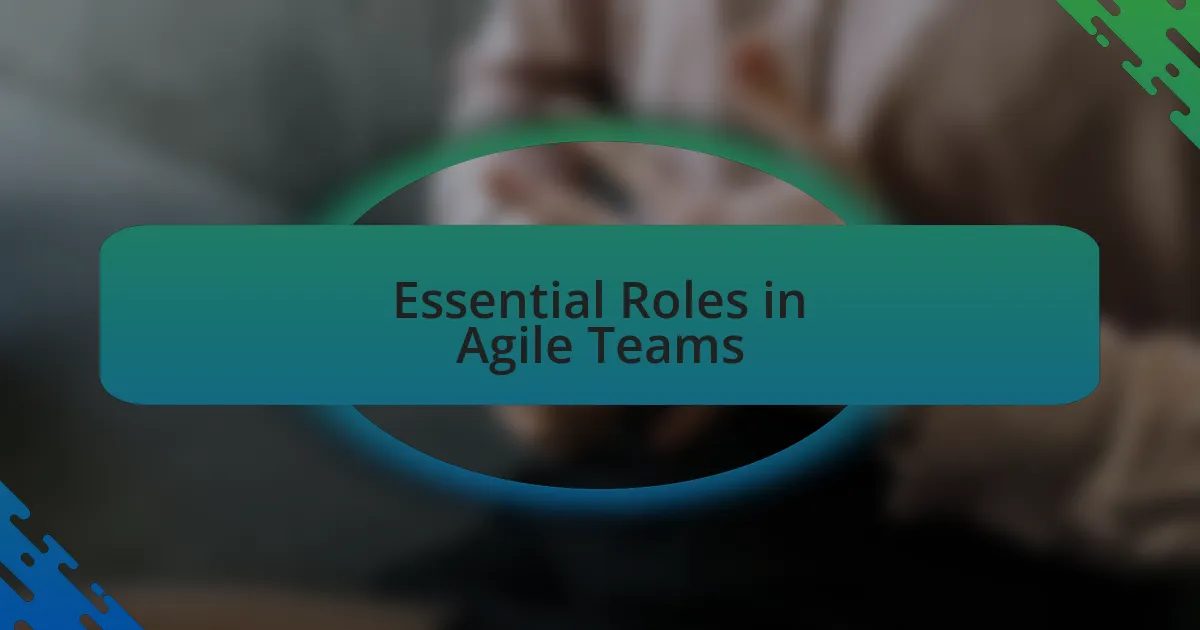
Essential Roles in Agile Teams
In an agile team, the Scrum Master plays a pivotal role in facilitating communication and removing obstacles. I remember when our Scrum Master stepped in during a particularly challenging sprint. She encouraged open dialogue, which helped us address conflicts and ultimately led to smoother collaboration. Have you ever had a leader who truly listened and made a difference in your workflow?
Another essential role is that of the Product Owner, who acts as the bridge between the stakeholders and the development team. I recall a project where our Product Owner gathered continuous feedback, allowing us to pivot quickly when priorities changed. It made me realize how crucial it is for a product to evolve based on real user input; after all, who better understands the marketplace than someone dedicated to the customer’s voice?
Lastly, developers and designers within the team bring varied expertise and creativity to life. I cherish the moments when our collaboration resulted in innovative solutions, like when a designer suggested a UI change that drastically improved user experience. What I found most rewarding was how our diverse talents harmonized to create products that resonated deeply with users. Isn’t it exhilarating to see how a blend of skills can lead to exceptional outcomes?
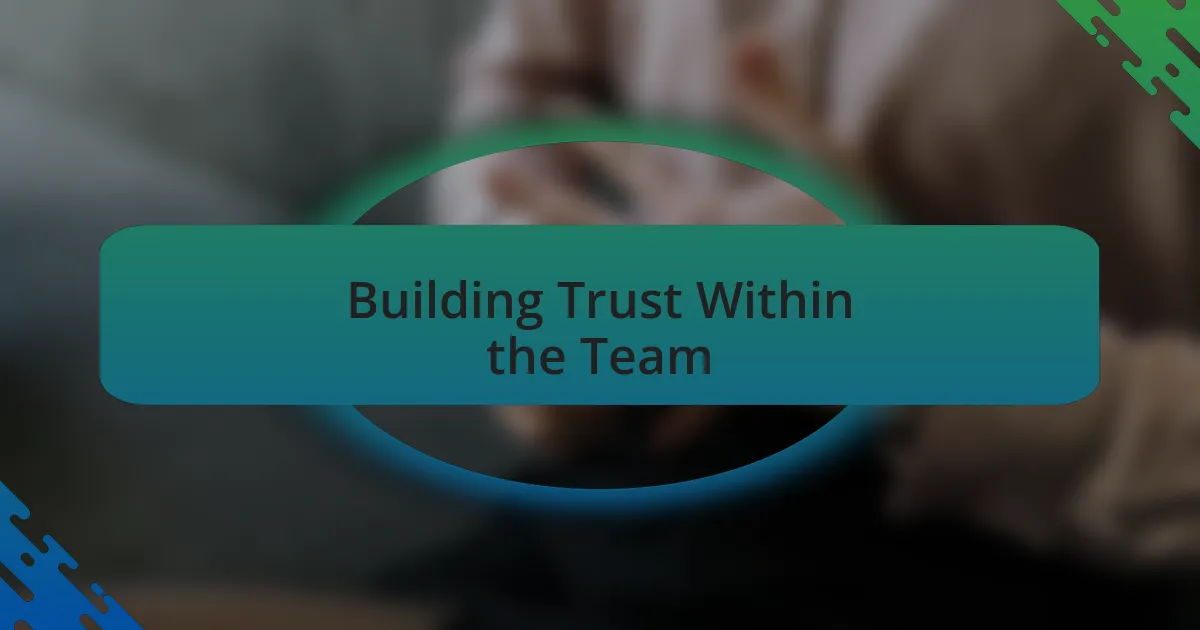
Building Trust Within the Team
Building trust within an agile team is essential for fostering effective collaboration and innovation. I vividly remember our first team-building retreat. We spent an entire day engaging in activities that pushed us out of our comfort zones, which led to unexpected laughter and shared vulnerabilities. It struck me how quickly barriers came down when we took the time to understand each other beyond our roles.
Another way I’ve seen trust grow is through transparency in our work processes. When I initiated regular updates on our progress, I noticed team members felt more included and engaged. This openness made it easier to voice concerns and celebrate successes as a unit. Have you experienced that shift when everyone is on the same page?
Listening is perhaps the most underrated aspect of building trust. I recall a team member hesitating to share their ideas in a meeting. Once I encouraged them to speak up and acknowledged their input, I saw a visible change in their confidence. It made me realize that sometimes, fostering trust is simply about creating a safe space where every voice matters. Isn’t it remarkable how a little encouragement can lead to such profound connections?
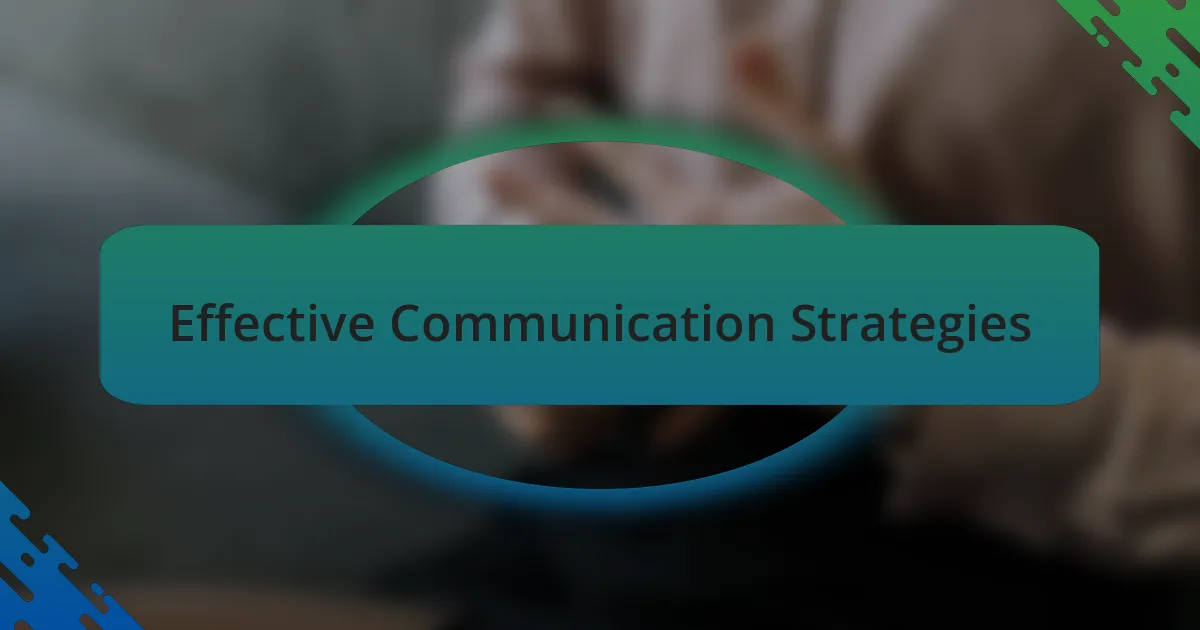
Effective Communication Strategies
Effective Communication Strategies
One of the most impactful communication strategies I adopted was the daily stand-up meetings. At first, I was skeptical about their efficiency, but I quickly saw how they fostered accountability and alignment within the team. I remember my team rallying around our shared goals; hearing everyone discuss their progress and roadblocks added a layer of transparency that truly motivated us to support one another. Have you ever witnessed how a brief meeting can change the dynamics of a team?
Additionally, using visual collaboration tools transformed the way we communicated complex ideas. I once shared a brainstorming board with the team, and I was amazed at how many innovative solutions emerged from that visual aid. It turned an abstract concept into something tangible, allowing everyone to contribute freely. This experience reinforced my belief that when information is presented clearly, it empowers team members to engage more actively. Isn’t it wonderful how visuals can bridge communication gaps?
I also found value in creating an environment where feedback flows both ways. I initiated a culture of constructive criticism, ensuring that team members felt safe to share their observations. One particular instance stands out — after a project review, I asked for honest feedback about my leadership. The openness of the discussion showed me the importance of vulnerability in fostering trust. When was the last time you sought feedback from your peers and how did it impact your relationships?
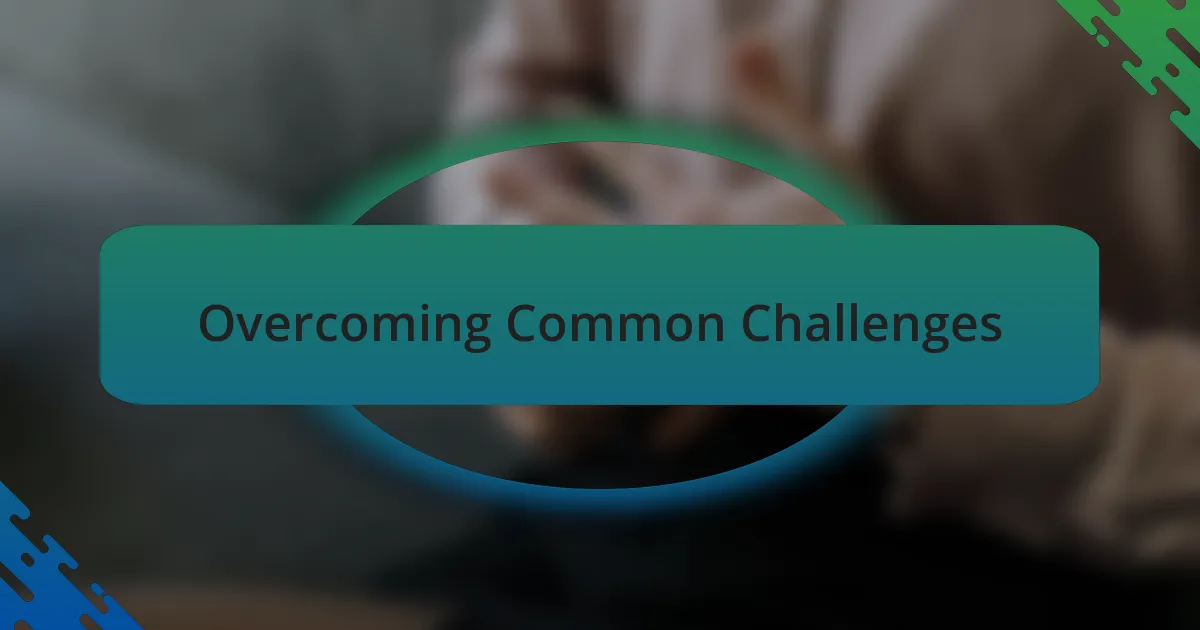
Overcoming Common Challenges
Overcoming challenges in an agile setting often starts with addressing misunderstandings. In the early days of my team, we encountered friction due to differing expectations around roles and responsibilities. By facilitating a workshop to clarify these roles, I saw a noticeable shift in accountability — everyone stepped up, and it felt like we were finally on the same page. Have you faced similar misunderstandings, and how did you go about resolving them?
Another hurdle I frequently encountered was resistance to change. I remember a team member expressing frustration about adopting a new tool we were implementing. Instead of pushing forward, I organized a hands-on session where everyone could explore the tool together, sharing insights and tips along the way. Watching the team transform their skepticism into excitement was rewarding; it’s incredible to see how shared learning can turn resistance into acceptance. Have you found that collaboration can ease the transition during challenging times?
Trust issues can also plague high-performing teams, and I’ve seen this firsthand. In one instance, a lack of trust caused delays in decision-making, hindering our project’s progress. To tackle this, I initiated team-building activities that encouraged personal connections. Watching my colleagues bond over shared experiences ultimately strengthened our teamwork and trust significantly. Isn’t it fascinating how personal connections can enhance professional relationships?

My Personal Experience and Insights
As I navigated the journey of building a high-performing agile team, one striking lesson stood out: the importance of transparency. I recall a pivotal moment when I openly shared a project setback with my team. The atmosphere shifted instantly; instead of blame, we discovered a collective desire to brainstorm solutions. Sharing vulnerabilities not only dismantled walls but also cultivated a sense of shared ownership. Have you ever noticed how openness can transform group dynamics?
Another key insight for me was the impact of recognizing individual contributions. I vividly remember a teammate who consistently went above and beyond but rarely received acknowledgment. One day, I took a moment during a team meeting to celebrate their efforts. The resulting smile on their face and the ripple of positivity that followed reaffirmed my belief: recognition fuels motivation. Do you think acknowledging small victories can create more engaged teams?
Finally, I learned that fostering a culture of continuous feedback is essential. I once implemented weekly check-ins, which seemed daunting at first. However, these sessions became an opportunity for honest discussion and immediate adjustments. The transformation was palpable; as we began to address issues in real-time, the team’s productivity and morale surged. Have you experienced firsthand how regular feedback can reshape team performance?